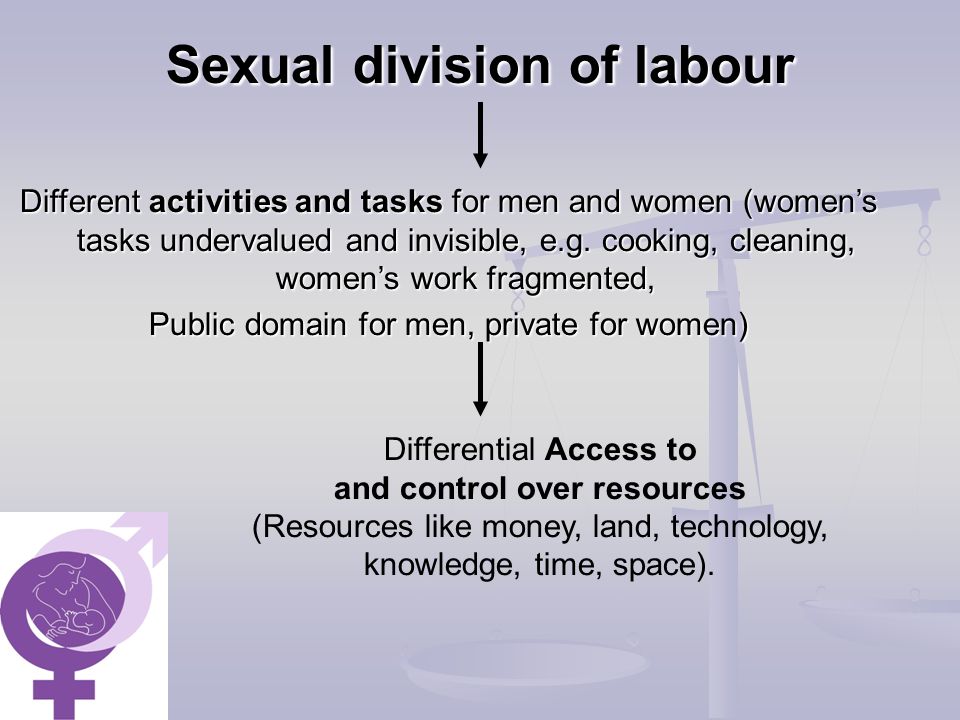Relevance: Sociology: Paper I: Systems of Kinship: Patriarchy and sexual division of labour.
INTRODUCTION

Humans have existed for more than 400,000 years and our social systems have gone through a continuous change in some spheres which can be felt and is obvious while in some spheres where it is extremely influent but proportionately more latent. The same applies to our social structure and the way we divide work. With regard to this, humanity arrives at a very peculiar situation. The situation of either breaking free from the patriarchal society, male entitlement and division of labor or be bound by these regressive views.
The reason why we mention these three different facets together is that even if we can study them idiosyncratically academically, in the real world away from academia, these factors work as a shackle together for the women of this world. Thus, it is quintessential for us to tackle them as a group at some point.
Aristotle had stated that a woman was a mutilated man while Sigmund Freud said the anatomy of a woman was a destiny and a normal human was a male. Misogynistic comments such as these from such intellectuals, which have been proven to be lacking scientific evidence, has caused harm to the cause of equality between both the major sexes and contradicting to these views, the discourse towards equality is at its all-time high.
Women are almost half of the world’s population and their contribution cannot be stressed enough. Now, however, we move away from a non-technical point of view to a more technical one, which would be in the realm of sociology, anthropology, history, feminism, and economics to understand the topic at hand.

History of Patriarchy, Entitlement, and Division of labor
Patriarchy is the prime obstacle towards the development of women in both the household and workplace. The basic concept remains constant that men are in control. This phenomenon is almost present in every society and an understanding of the structuring of the society vis-à-vis the placement of woman is the key to dismantle the structure.
So, why did we start with patriarchy among the trifecta of problems? The answer is simple, it is because the social structure which dictates who owns the property, who manages the household and who works and patriarchy, which is a social system solve the puzzle.
The world today is the joint achievement of both men and women. Though women are now in a position of power in terms of both political and economic means (relatively), society is still mainly male dominated. The concept of patriarchy originally meant that a ‘head man’ took decisions for everyone in the family, including the other men. Over time, the concept has drifted to mean power control held by men in society. It can be also said that men hold all the important institutions and make it exclusive from the reach of woman.
The exploitation of women thus is amplified by the biological difference(which is itself exaggerated) and states that because of this, women should be assigned more docile tasks while men should be associated with more labor-intensive tasks. To understand this point further, we need to look at the history of how work was sexually divided.
Sexual Division of Labour (SDL)
Historically, this refers to a division of work to collect food for the benefit of the family. This was the reality of hunter-gatherers and anthropologists have tried to study the remaining tribal groups to take a measured view of how societal structure saw women’s role in the society, commonly referred to as behavioral ecological perspective.
An interesting theory called the life history thought says that both the sexes have the option of either utilizing the resources for the existing offspring or produce new ones. Both males and females calculate the maximum benefit for reproductive fitness, which loosely states that females are much more sure of their offspring compared to males and females have lesser mating opportunities and carry more risk in mating in contrast with males. This is not true for all tribal groups and cannot be stated as a doctrine.
Another theory is that of natural selection according to which male reproductive strategies that stress mating effort and females concerned with parental concerns. Therefore, women perform more docile work such as collecting vegetable and taking care of cattle, whilst men do more hard labor. This view has not been agreed upon universally and has been mixed with the view of promiscuity. It can be seen that promiscuity was encouraged between both males and females. This led to a more communal group as children could be not traced to only two individuals. More recently, Steven Kuhn of the University of Arizona suggested that the sexual division of labor only started taking place after the upper Palaeolithic age (50,000 and 10,000 years ago).
Many such hypotheses were formed to explain the origins of SDL like Provisional Household theory which stated that pair bond led to females taking care of the children whilst men took care of collecting food in order to foster their offspring. The most important of these may be the optimal foraging theory which might explain the patriarchy system that was established because in order to maximize calorie intake vis-à-vis per unit time. According to this, it would be rational for a man to hunt for resources which are difficult for the female, who also assumes parental duties, to gather and thus, pass the calorie induced resources which the female can obtain.
Another explanation lies in the spatial abilities of women and men. Research has proven that men are biologically superior(this is marginal and rough) in terms of mental rotation and assessing horizontality and verticality. However, a woman is superior in spatial memory (and it has been proven that with little training, the deficiencies can be overcome). Thus, cognitive differences have been traced to be the reason for SDL but this is countered when one checks the history and notices that SDL is rather a new phenomenon.
CONTEMPORARY VIEWS ON all three facets
According to functionalists in sociology, to perform the functions of the family and the continuity of it, males and females have been assigned separate roles. This results in social differentiation. Here, the primary role of homemaker was given to the female as she is the child bearer and the male is assigned the role of the bread earner.
Conflict sociologists insist that men in the society were primarily the owners of private property and this led to them depriving a woman of their rights as the woman was primarily dependent on a man (father, male kin or husband) for living. This led to their loss of economic independence and wealth.
The discourse by feminists argued that gender differentiation is not biological rather it is cultural. According to them, men assigned them domestic chores and this was not due to a biological difference and society coercively confided them in this role.
Historians state that the war engaging behavior of mankind, where women were considered biologically weaker and were assigned a more domestic role. Women were considered as breeders and this led to polygamy in several societies and religions.
Thus, when we find the mutual point that the first two parts of the factor, i.e., patriarchy and SDL developed and male entitlement was a by-product of this. Thus, men started dominating in fields and the dogma of the religious institutions were catalysts for this. For example, showing Eve as the evil one in Genesis and the Hindu lawmaker, Shalu, shallowly said that as women are weak, they are unfit to enjoy freedom. Even in other philosophies such as Daoism, the yin and yang concept, the dark side is assigned to the female emotions which according to them were the vices humans faced.
It is important to note that all people and philosophies did not adhere to these. Albert Camus celebrated the fact that women could wear whatever they wanted when he visited a beach. Even in the Hindu religion, one can notice how female deities are given an important spot and people of both the sexes worship them. In Greek mythology, many goddesses could be seen to be worshipped who was worshipped by all.
MALE ENTITLEMENT
Sociologist term male entitlement when males hold the position of powers in important social institutions such as top positions in religious institutions, law institutions, political institutions, etc. Feminists argue that because of this male entitlement, women have never been able to climb to important positions and the balance could only be formed through the reservation.
A counter view to this is made by men’s scholars who claim that there is a typical hegemonic masculinity, which is mostly represented by a bourgeoise, chauvinistic, misanthropic male who holds a high position in these institutions, at least in contemporary times, is because of his socio-economic status and not because of his gender.
The Indian government has also taken steps to ensure women representation in the government by proposing to reserve at least 33% of seats in the Lok Sabha for women. The bill has not been passed but there are signs that it will be implemented. In the corporate sector, it is mandatory for companies to at least have one female member on the board of directors.
In economic terms, feminists argue that it is because of male entitlement that women’s contribution to the GDP is not accounted for. According to a study, women do two third of the world’s work while men do only one-third of the world’s work but are paid way more than women. In some instances, women do a dual task of childcare and earn a livelihood. It is often observed that women take more responsibility in taking care of the family whilst men, especially in the poorer sections of the society, get engaged in crime early or drugs and some claim that this is because of the entitlement given to men, which creates a sense of superior being in them from a time they are babies.
Archaic practices such as female foeticide and preference of a male child over a female one have led to a varied sex ratio in India and other developing countries. This can be again attributed to the male entitlement that is prevalent in society. The view stems from historic times when rulers had to fight in wars or engage in battle. However, as society is changing to a more non-combat one, this view has to and is in some terms, fading away.
For more such notes, Articles, News & Views Join our Telegram Channel.
Click the link below to see the details about the UPSC –Civils courses offered by Triumph IAS. https://triumphias.com/pages-all-courses.php

